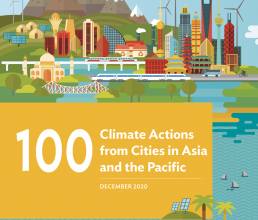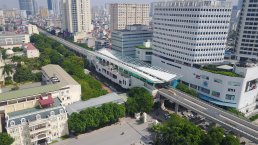First appeared in

Asian Development Bank
100 Climate Actions from Cities in Asia and the Pacific
The capital city of Ha Noi is developing an integrated public transportation system and utilizing social media outreach to help persuade residents to switch from private to public transportation.
The capital city of Ha Noi is developing an integrated public transportation system and utilizing social media outreach to help persuade residents to switch from private to public transportation.
Ha Noi is looking to improve public infrastructure by constructing a mass rapid transit (MRT) system consisting of four metro lines. The first phase is the completion of Metro Line 3 which will link the city’s western suburbs to the city center. As well as constructing four elevated and eight underground sections for the 12.5 km metro line, the project will also improve accessibility features of stations, integrate 52 buses, add park-and-ride facilities, and create a digital information system providing real-time information.
540K
TON DECREASE IN CO₂E
Furthermore, the project integrated a public communication strategy based on public opinion research. The research was conducted to understand the barriers to utilizing public transport — residents are devoted to their motorcycles representing an 80% share of urban transportation.
The research uncovered three main motivators for metro use, the “3 Ts”: traffic, time, and trees (the environment) and “4 Ps” that dissuade the public from using it: proximity, public safety, price, and politeness.
ADB provided financing of over $53 million for the project.

Ha Noi’s residents will benefit from the new MRT system. The first line should be completed in 2023 (photo by Ha Noi Metropolitan Railway Management Board).
The Challenge
To encourage residents to use public transportation and to reduce greenhouse gas emissions, the city of Ha Noi needs to persuade their residents to give up their motorcycles
Co-Benefits
Health By choosing public transportation options over private, air quality can be improved reducing adverse health conditions for residents.
Social By engaging residents through social media, the city is successfully helping to change the perception of the metro and public transit to encourage residents to make the switch.

